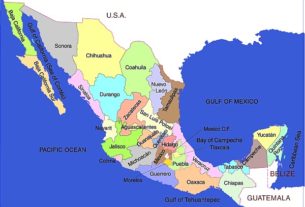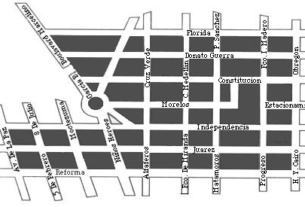Did You Know…?
Mexican kapok trees once helped the U.S. war effort.
During the Mexican dry season, a peculiar and very distinctive leafless tree often attracts attention because it appears to have large balls of fluffy cotton-wool attached to the ends of its branches. These kapok or silk-cotton trees belong to the Bombax family, Bombacaceae, which includes many fascinating, handsome and much admired trees.
They played a small but significant part in the U.S. participation in World War I and World War II in the first half of the twentieth century.
The quick-growing kapok trees ( Ceiba spp.) with their wide, spreading crowns can grow to heights in excess of 40 meters. Their great bulk requires a buttressed trunk for support. Some young specimens have strange, coarse, conical spikes growing on them; a branch broken off a young tree is reminiscent of a medieval mace (not the kind you cook with, but the kind you bash heads with!)
But the kapok’s war contribution did not come from the club-like qualities of its young offspring, but from the fluffy fibrous seed-pods that are so distinctive on more mature specimens. In late winter, these deciduous trees lose their leaves before they come into flower. The flowers open only at night and are pollinated mainly by bats. Then, fruits develop. A single tree may develop up to 4000 fruits, each containing 200 seeds tightly packed in white or brownish “cotton”. Mature fruits split open in early spring revealing a mass of fluffy fibers – the “cotton wool” that in nature serves to help the wind-dispersed seeds remain airborne for great distances.
These same lightweight, water-resistant, insulating (both acoustic and thermal) fibers have long been used for cushions, mattresses, sleeping bags and life jackets. Kapok-filled life jackets were introduced to Britain’s Royal Lifeboat Institution as far back as 1904, but their bulk meant that they were not immediately popular. However, a kapok-stuffed life jacket can support 30 times its own weight in water. As the century progressed, kapok life jackets became a vital part of mariners’ safety gear. They became so common that, during World War II, U.S. sailors would routinely refer to their life jacket as “a kapok”. Since that time, man-made synthetic alternatives have been developed that have the additional advantage of not being inflammable.
Even during peacetime, kapok played an important role in U.S. life: it was frequently used as the stuffing for baseball and softball bases and balls.
In addition to its fibers, the kapok tree provides other benefits to mankind. Crushing its seeds provides oil which, besides being edible, is used for making soap; the residue from oil extraction makes nutritious seed cake for cattle. Kapok wood, easy to work but brittle when dry, is turned into boxes, paneling, coffins, and dug-out canoes. In fact, the scientific name Ceiba is thought to be an old Carib word for “canoe”. Even the spines on the trunk are useful – for carving handicrafts. The bark of the tree is also known to have medicinal purposes by many Indian tribes, so it’s hardly surprising that the Pochote, as Mexicans usually call it, is often left as a shade tree long after other trees have been chopped down. The Maya in southern Mexico have gone one stage further and consider the tree (a native of tropical America, and Yaaxché in their language) to be the sacred World Tree, the only living thing to touch the heavens.
Commercial production of kapok, for markets in Japan, China, the European Union and the USA, now comes mainly from Thailand and Indonesia. Plantations in Indonesia grow kapok varieties that lack spines and whose fruits have to be opened by drying in the sun. The trees produce pods after three or four years, and continue to produce them for another 50 years. A single tree produces up to 2.7 kilograms of kapok each year. A decade ago, the total value of world trade was estimated to be worth 11.4 million dollars, with a wholesale price of around 2,000 dollars a metric ton.
Other members of the Bombacaceae family also have interesting stories to tell. For instance, the wood of Ochroma lagopus, which grows naturally in southern Mexico, is better known as balsa-wood, long a favorite with model-makers, and once considered a vital raw material for the airplane industry. Balsa is Spanish for “raft” and balsa-wood is making something of a maritime comeback today as a lining for supertankers – useful because it prevents potentially dangerous build-ups of static electricity, reducing the risks of an explosion. Yet other trees in the Bombax family have spectacular flowers and are cultivated as ornamentals.
So, next time you see a tree with “cotton wool” on the end of its branches, remember that you’re looking at a tree which played an important part in the history of the twentieth century, a tree which helped the U.S. when it went to war.
Did You Know Index
Copyright 2004 by Tony Burton. All rights reserved.



